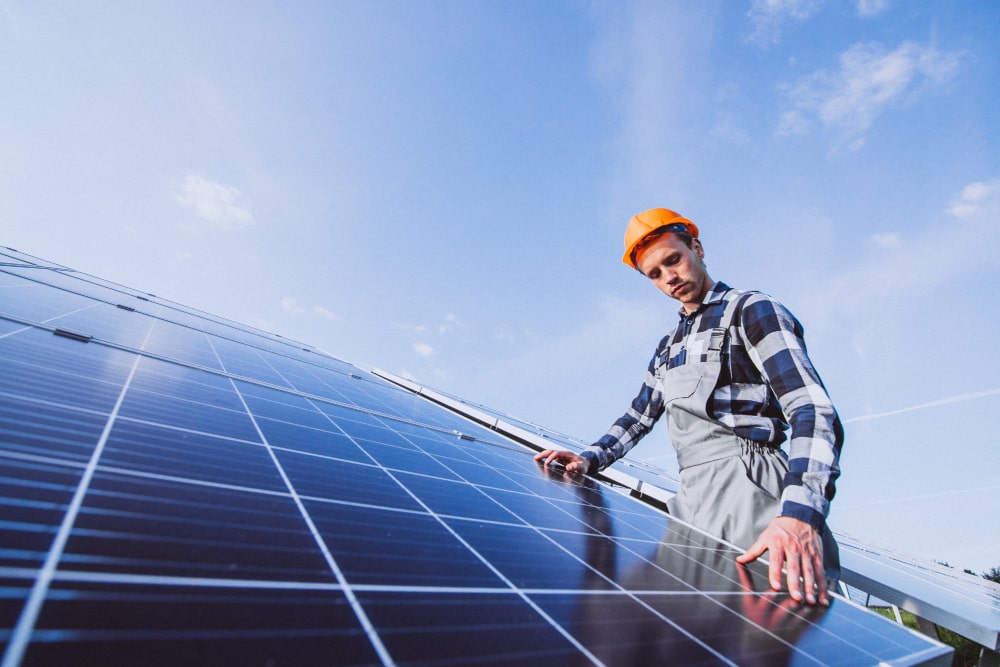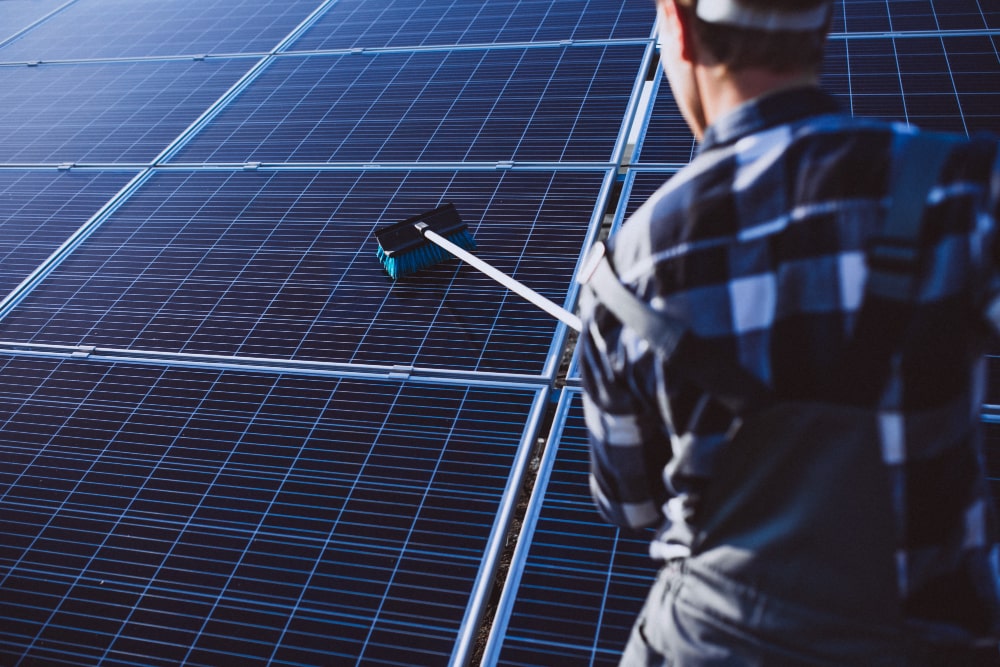How to Clean Solar Panels? DIY Guide
Solar panels are a reliable and eco-friendly source of renewable energy. However, to ensure their optimal performance and maximize electricity generation, regular maintenance and cleaning are essential. Dust, debris, bird droppings, and other pollutants can accumulate on the surface of solar panels, reducing their efficiency. In this DIY guide, we will walk you through the step-by-step process of effectively cleaning your solar panels, allowing you to harness the sun’s power to its fullest potential.
Why the Need to Clean Solar Panels?
It is important to clean solar panels in order to increase their productivity. If your residential solar panel is less than Kw, it is advisable to clean it with water and a brush.
But if you have a large solar panel, cleaning it annually can be challenging. In this case, you should take the help of a professional solar cleaner.
How Often Should the Solar Panels be Cleaned?
The cleaning frequency of solar panels can vary based on factors like the local climate, dust or dirt accumulation, and the surrounding environment. In general, it is advisable to clean solar panels at least once or twice a year.
However, if you live in an area with high levels of dust, pollution, or bird activity, more frequent cleaning may be needed, typically every three to six months. It is recommended to conduct regular inspections to assess the condition of your panels and determine the appropriate cleaning schedule based on your specific location and circumstances.
Tips to Clean Solar Panels
Below are some safety tips for cleaning solar panels:
- Ensure that your solar panel system is turned off or disconnected from the grid.
- Choose a time when the panels are cool and not directly exposed to sunlight. Hot surfaces can cause water to evaporate quickly, leaving behind residue.
- Wear safety gloves and glasses to protect yourself during the cleaning process.
Materials Needed:
- Soft-bristled brush or sponge
- Bucket
- Mild detergent or dish soap
- Hose or water source
- Squeegee or lint-free cloth
- Safety gloves and glasses


Step-by-Step Cleaning Process:
Before diving into the cleaning process, it’s important to inspect your solar panels for any visible damage or defects. Look for cracks, loose wiring, or other issues that may require professional assistance. If everything appears to be in good condition, proceed to the next steps on how to clean solar panels.
1. Dry Cleaning: Start by performing a dry cleaning to remove loose debris from the panels. Follow these steps:
- Use a soft-bristled brush or sponge to gently brush off any dirt, dust, or leaves from the surface of the panels.
- Avoid using abrasive materials or hard brushes that can scratch the glass.
2. Wet Cleaning: If dry cleaning is not sufficient to remove all the dirt, proceed with wet cleaning using the following steps:
- Clean solar panels with a bucket of warm water and add a small amount of mild detergent or dish soap. Mix the solution gently.
- Dip the soft bristled brush or sponge into the cleaning solution and apply it to the surface of the solar panels. The entire area should be covered evenly.
- Allow the cleaning solution to sit on the panels for a few minutes to loosen any stubborn dirt or stains.
3. Rinsing: After the cleaning solution has had time to work, rinse off the panels using the following steps:
- Use a hose or a gentle stream of water to rinse the panels from top to bottom. Start from the highest point and let the water flow down, carrying away the dirt and residue.
- Ensure that all the cleaning solution is rinsed off and the panels are thoroughly cleaned.
4. Drying: To prevent water spots and streaks, dry the solar panels using the following steps:
- Use a squeegee or a lint-free cloth to remove excess water from the panels. Start from the top and work your way down, ensuring a streak-free finish.
- Pay attention to any remaining water droplets or spots and wipe them dry until the panels are completely clean and dry.
5. Regular Maintenance: To keep your solar panels in optimal condition, consider the following maintenance practices:
- Schedule regular inspections to identify any potential issues or damages that may require professional attention.
- Trim any nearby vegetation that may cast shadows on the panels and reduce their exposure to sunlight.
Monitor your solar panel system’s performance through monitoring devices or software provided by the manufacturer. Any significant drop in energy production may indicate the need for cleaning or maintenance.
Conclusion:
To guarantee performance and efficiency, it is crucial to clean the solar panels regularly. This DIY guide provides valuable insights on how to effectively clean solar panels. By following the recommended steps you can maximize the power output of your solar panels and extend their lifespan. Take charge of your solar panel cleaning routine and enjoy the benefits of clean, renewable energy.
FAQs
Not cleaning solar panels can result in reduced energy production, decreased efficiency, the potential damage from corrosive substances, and uneven cell heating. Regular cleaning is essential to maintain optimal performance and maximize the lifespan of solar panels.
Hiring a professional to clean your solar panels is not always necessary unless you have specific circumstances or limitations. With proper safety precautions, you can effectively clean the panels yourself using the DIY guide provided.
It is important to avoid using abrasive materials, harsh chemicals, or cleaning agents when cleaning solar panels as they can harm the panels and impact their performance. Instead, opt for mild detergents or dish soaps mixed with water for a safe and effective cleaning process.
It is best to look for signs such as a decrease in energy production, the presence of dirt or debris buildup, stains, bird droppings, or obstructed sunlight. Regular monitoring and periodic inspections can help assess the need for cleaning.
Once your solar panels are cleaned, you can monitor their performance by checking the energy production data displayed on your solar inverter or monitoring system. Always compare the post-cleaning energy generation with the previous data to ensure improved efficiency and optimal performance.

Ileen Kaur (Author)
Ileen Kaur is an exceptional content writer, bringing her expertise and creativity to the digital realm. With a passion for storytelling and a knack for crafting compelling narratives, she has the power to captivate audiences and leave a lasting impression.
